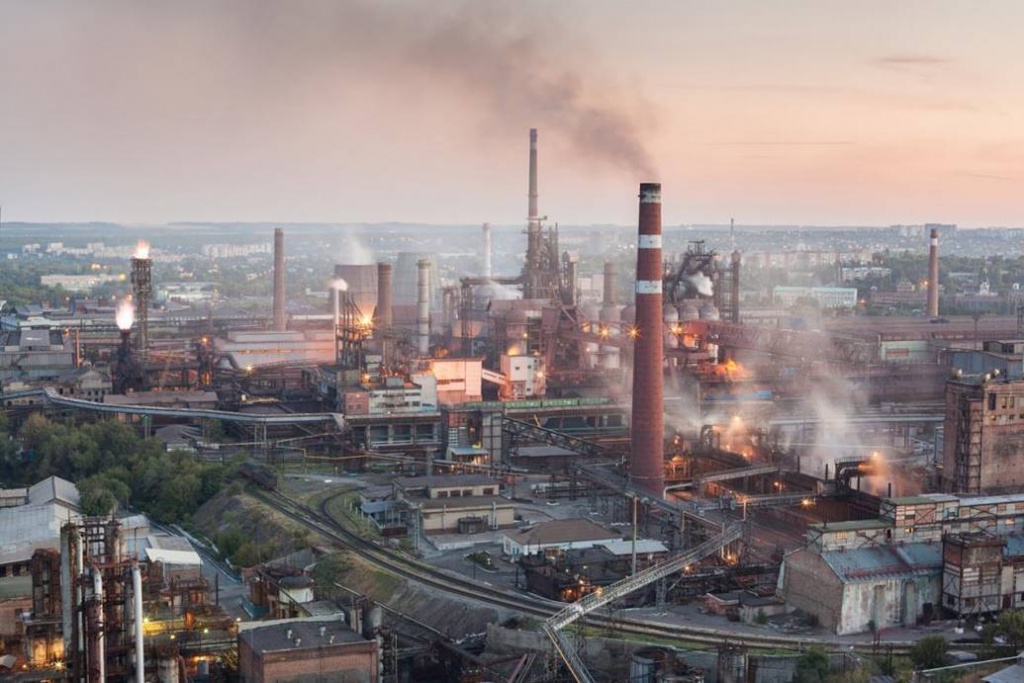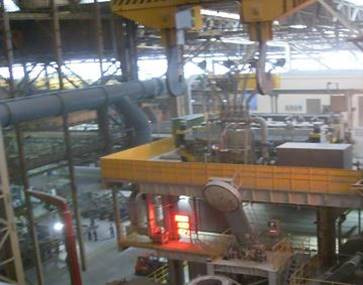-
Products
- Gas analysis systems
- GAOS SENSON gas analyzers
- GAOS MS process mass spectrometry
- MaOS HiSpec ion mobility spectrometer
- MaOS AxiSpec ion mobility spectrometer
- Applications
- News
- Events
- About us


In modern metallurgy, most technologies for producing ferrous and non-ferrous alloys, stages and operations of the metallurgical and blank production are associated with the implementation of heterophase processes and reactions (blast furnace, oxygen-converter, autogenous production, steel degassing, etc.). The qualitative and quantitative composition of the gas environment (one of the reaction phases), time dependence and the dynamics of the gas blend composition have a great influence both on the technological process behavior and on the final product quality. Many metallurgical processes produce flammable and explosive gases, a hydrogen-oxygen mixture for example. The release of harmful and toxic gases into the atmosphere is the main source of environmental pollution during the operation of metallurgical enterprises. In this regard, the solution to the problem of efficient and continuous gas-analytical measurements of the gas environment of metallurgical units, for monitoring and controlling technological processes, ensuring the safety of work, environmental monitoring and processes for cleaning exhaust gases, is highly relevant.
The relevance of the use of gas analysis systems based on time-of-flight mass spectrometers in metallurgy was substantiated in the 70s of the last century by Academician of the Russian Academy of Sciences Boris Mamyrin. Scientists at his laboratory of mass spectrometry, together with colleagues from the Moscow Institute of Steel and Alloys, Zaporozhye Institute UkrNIISpetsstal, for a long time conducted research on various metallurgical units. The results of these studies were the decision of the USSR Ministry of Ferrous Metallurgy to develop and implement the FTIAN mass spectrometer for ferrous metallurgy. For the introduction of time-of-flight mass spectrometry into metallurgy, academician Boris Mamyrin was awarded the Prize of the Presidium of the Academy of Sciences of the USSR named after Konstantinov in 1982. Since then, gas-analytic systems based on the time-of-flight mass spectrometer FTIAN have been introduced at all enterprises of the USSR ferrous metallurgy.

The analyzed gas mixture is ionized by electron impact and pushed into the field-free drift space, in which a high vacuum has been previously created. Reflected from the mirror, the ions continue to fly to the detector: the larger the ion mass, the longer it will pass and reach the detector. The arrival time of ions at the detector is controlled by the registration system. 10,000 scans are performed in one second, which gives high accuracy in the identification of ions by their masses.
|
GAOS MS gas analyzers are installed in an IP55 rack, so they can work in any climatic regions and / or in conditions of excessive humidity and dust.
GAOS MS multi-component gas analyzers identify any gas components in the mass range from 1 to 800 amu.
The high speed of the gas analyzer allows you to display data on 200 masses for 0.1 s. |

|

Heat-resistant sampling probes take gases, for example, from a gas duct.
Pulsed heated lines transport gas samples to the gas treatment system.
The gas treatment system is designed to remove dust, scale, large foreign particles, moisture.
The mass spectrometer performs continuous analysis of gas samples and transmits measurement data to the operator via information lines.
The control station controls the operation of the entire system. The graphic station outputs data in a form convenient for the operator (graph, table) and archives the measurement data.

In converter steel production, the main physicochemical reaction is the oxidation of carbon in the cast iron, by oxygen from the blast to CO and CO2 oxides, which are dumped through the exhaust gas pipe. The concentration of carbon in the resulting steel, depending on the brand is in the range from 0.03% to 0.2% by weight. Information about the attenuation rate of the concentration of carbon oxides in the exhaust gases with continuous gas analysis allows us to predict the composition of the steel produced. Forecasting is based on the results of mathematical modeling of the converter production process.
Also, continuous analysis of the converter off-gases allows the operator to control the degree of lime assimilation according to the time dependence of hydrogen concentration, to monitor the tightness of the gas duct during the purge and the degree of vacuum of the converter according to the oxygen concentration.




Application in converter production of gas analytical systems based on time-of-flight mass spectrometer has significant advantages over conventional systems working on sensors:

The purpose of investment of modern metallurgical enterprises in the construction of installations for the vacuum processing of metal during the modernization of production is to improve the quality of the steel produced and the production of special-purpose steels. The vacuuming process allows you to effectively remove the dissolved gases in the metal: H2, N2, O2, and C due to the reaction with O2 with decreasing pressure. Vacuum treatment of steel reduces the amount of non-metallic inclusions (oxides), impurities (S, Mn, Pb, Zn, Cu), increases the limits of elasticity, strength, strength fatigue, and other mechanical and technological properties of the final product.

Steel degassing technologies:
The figure shows various modifications of the VOD process:
a) circulation degassing
b) steel degassing in a steel ladle (RH-process)
|
Melting process diagram in a degassing unit
|
Gas-phase composition diagram in the processing of steel using degassing steel unit
|
Decarbonization diagram in the processing of steel using degassing steel unit |

|

|

|
Degassing technology provides:
Examples of steel grades obtained using the degassing process:

control and optimize operating parameters of the process, obtain data for mathematical modeling;
monitor the efficiency of metal degassing and get steel with specified characteristics with the error of the chemical composition of impurities and dissolved gases not more than 1 ppm;
reduce the time and material costs for expanding the range of produced steel, improving technology and modernizing production;
use of a tracer as part of a gas analytical system (pulsed injection of He or Xe into a gas duct) allows one to correctly calculate the volume flow of flue gases at various pressures, which provides the necessary data for complete control of the steel degassing process.

The use of gas analysis in blast furnace production makes it possible to solve problems to reduce emergencies, monitor the technological regimes and select the optimal technological parameters, which in turn reduces the specific consumption of blast, natural gas, increases labor productivity and the quality of produced iron.
Information on the composition of gas flows is used for:
control of the uniformity of the ore melting process;